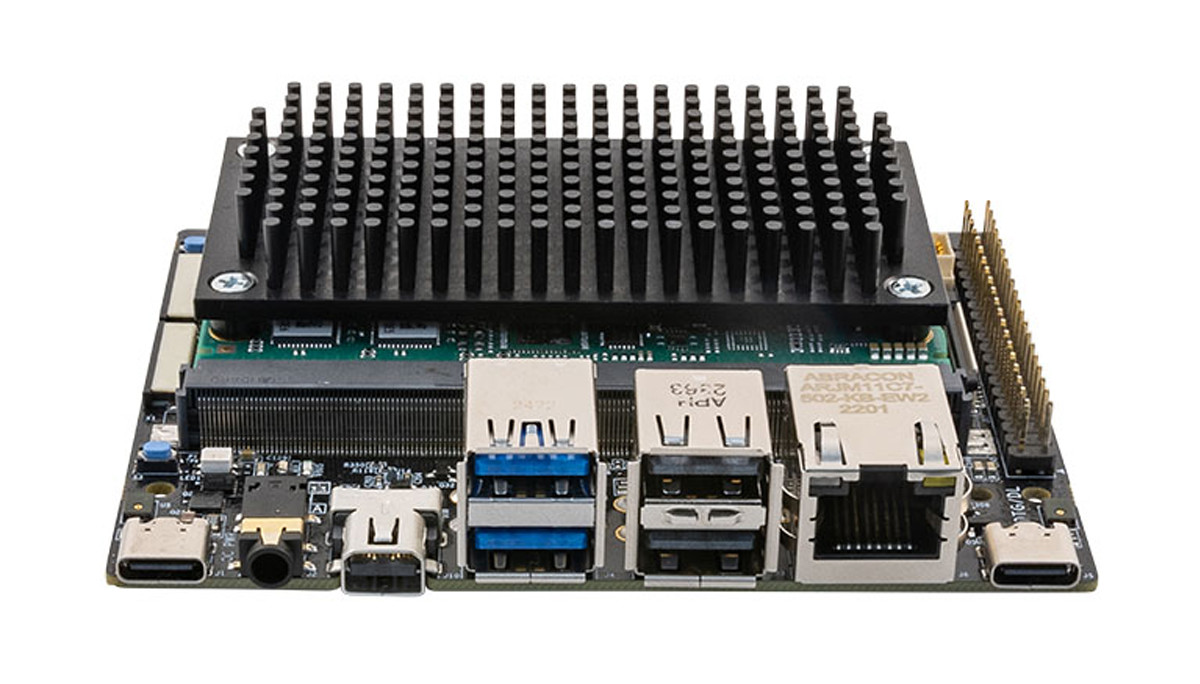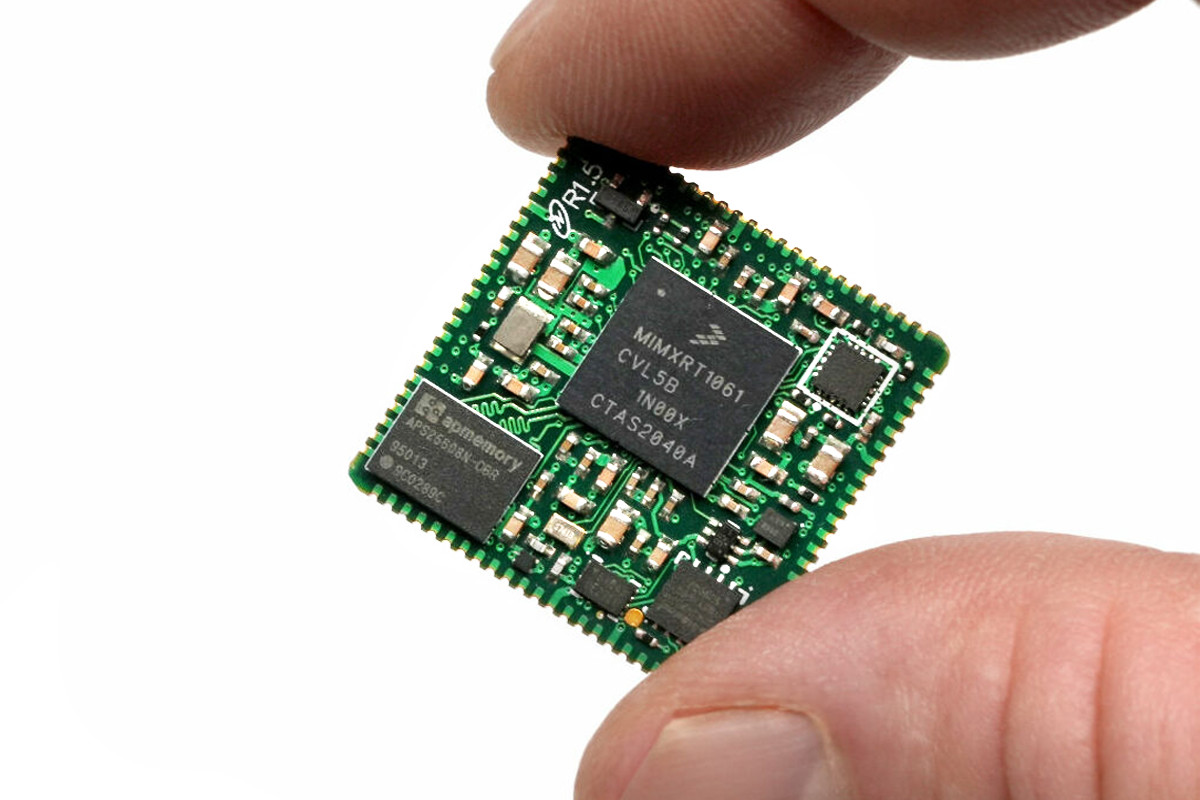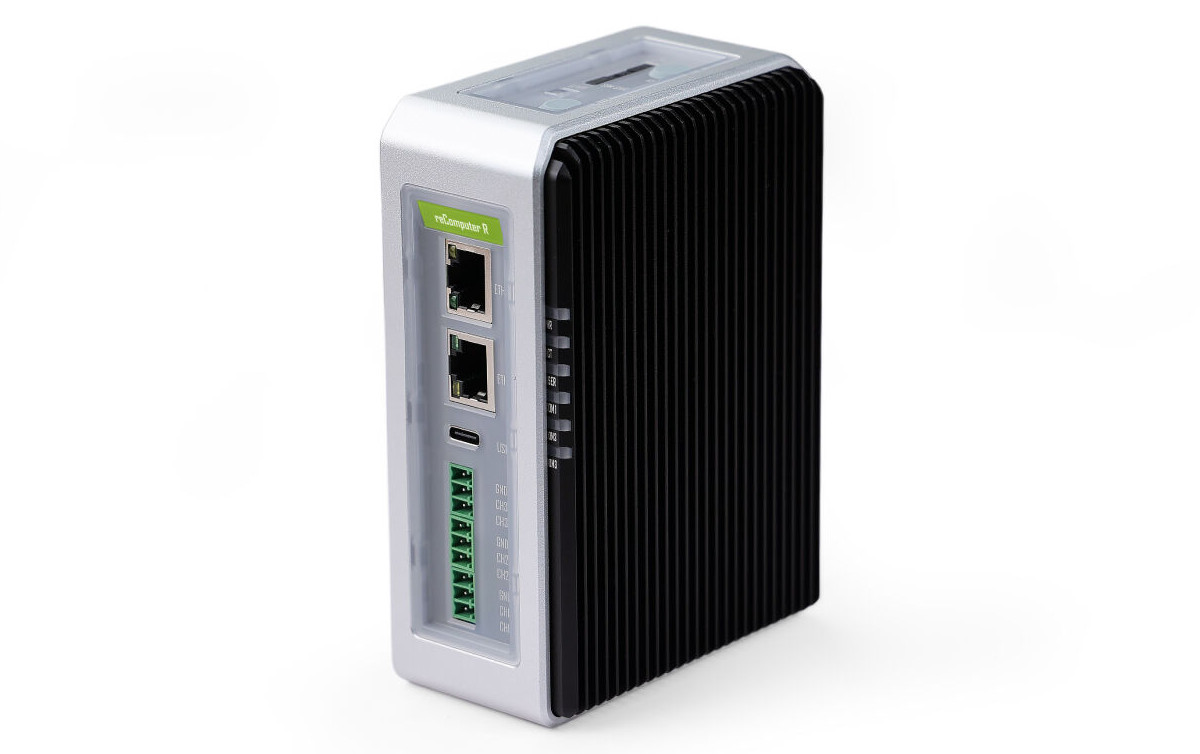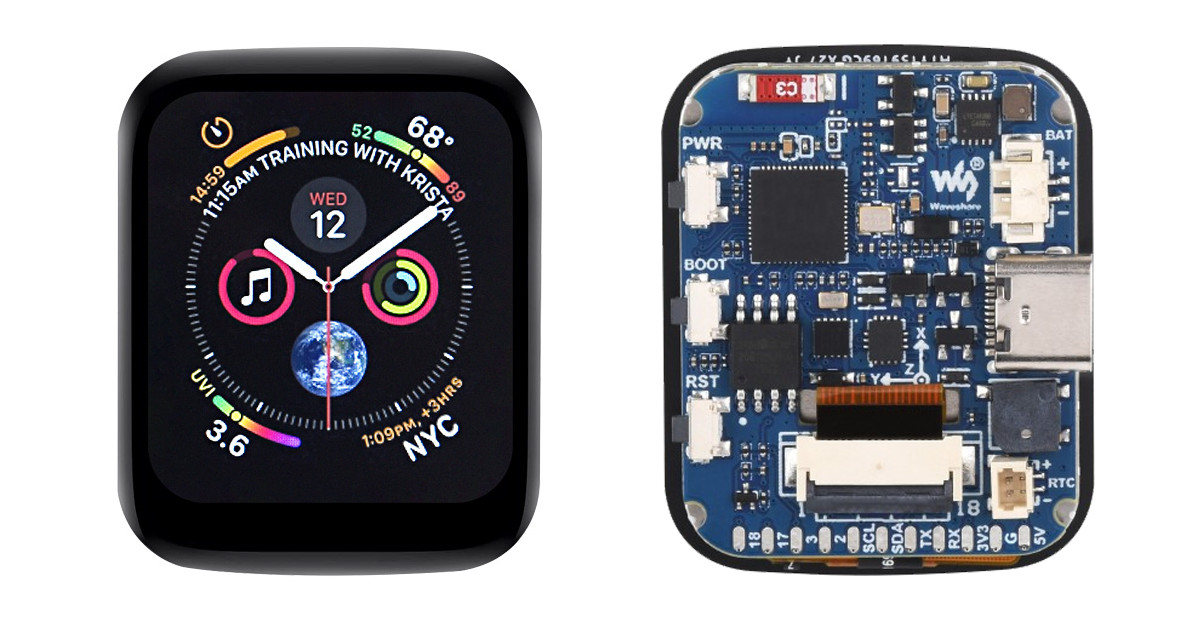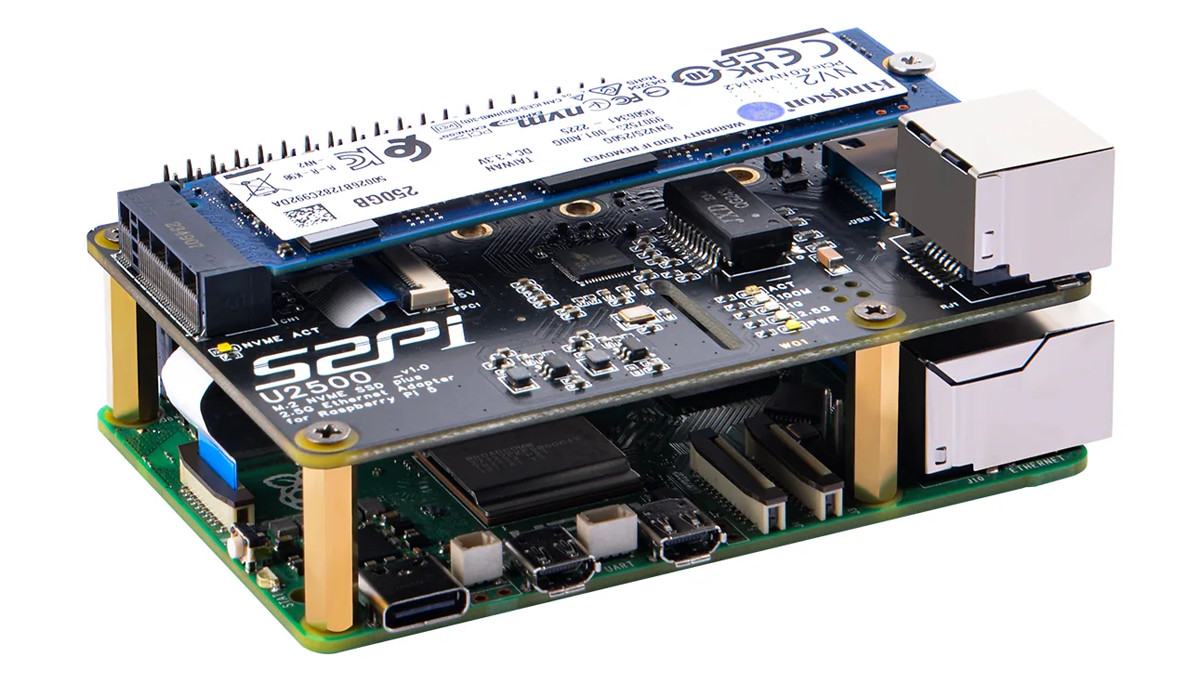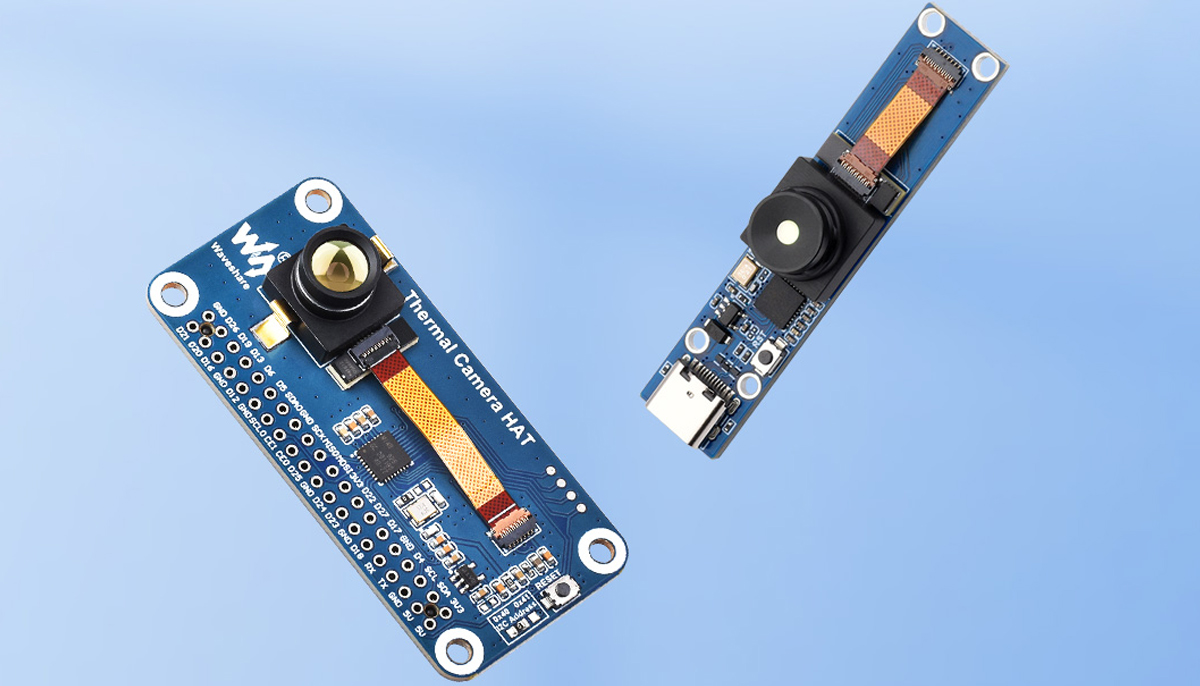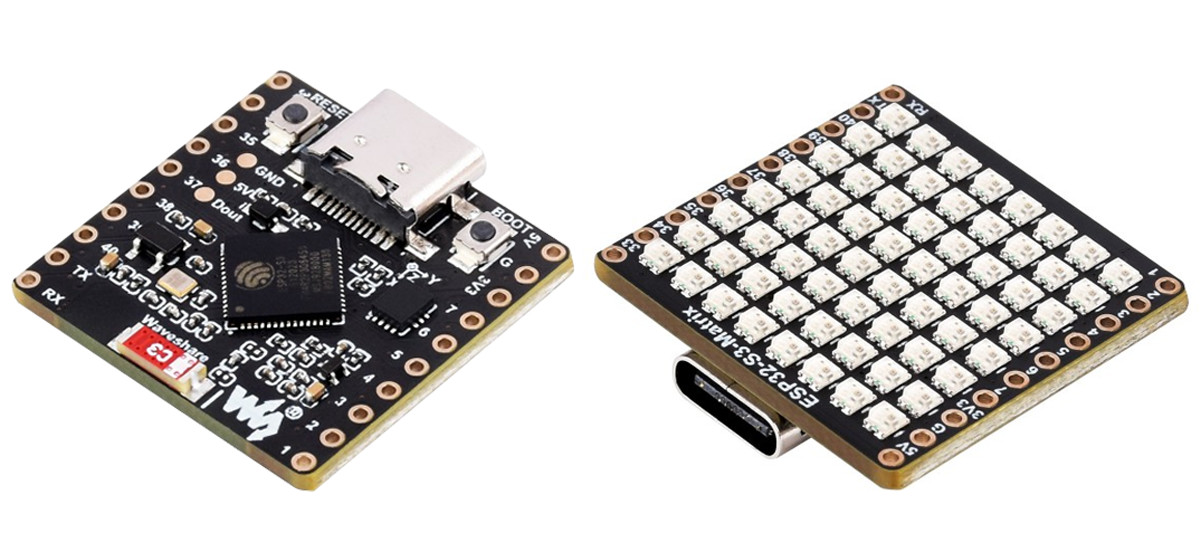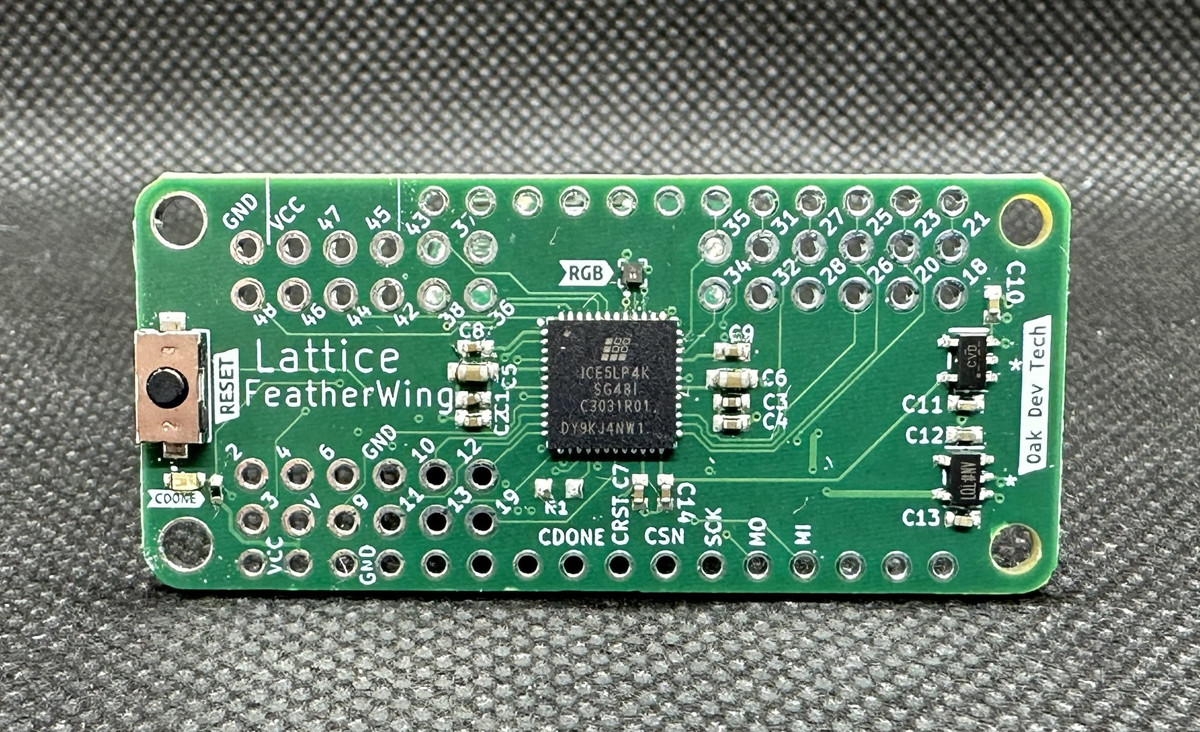Just last month at Embedded World 2024, Qualcomm announced its RB3 Gen 2 Platform based on the QCS6490 processor with Cortex-A78 and A55 processing cores and 12 TOPS of AI power. Building on this, Avnet has recently launched the Avnet AI Vision Development Kit, also based on the QCS6490 SoC. The kit includes a dual camera setup, Gigabit Ethernet connectivity, USB-C Power Delivery, and a host of other features for applications like inventory and asset monitoring, drone/UAV/other mobile vision-AI edge compute applications, and multi-camera security systems with recognition. Previously we have written about similar AI dev kits including Allwinner V853 100ASK-V853-Pro, Sipeed Maix-III devkit, RZBoard V2L, and many other AI vision development boards feel free to check those out if you are interested in the topic. Avnet AI Vision Development Kit specifications SM2S-QCS6490 SMARC Compute Module: CPU – 4x Arm Cortex-A78 (up to 2.7 GHz), 4x Arm Cortex-A55 (up to […]
NetBurner SOMRT1061 – A stamp-sized dual Ethernet SoM powered by NXP’s i.MX RT1061 crossover processor
The NetBurner SOMRT1061 is a System-on-Module (SoM) that comes in a very compact stamp-sized footprint that measures just 25.4mm x 25.4mm, yet boasts a rugged design and 67 usable GPIO pins with edge connectors. These features make this SoM ideal for a wide range of medical, industrial, and robotics applications. The SoM is built around the NXP’s i.MX RT1061 Arm Cortex M7 SoC, and features 1MB of internal SRAM, 32MB of external RAM, and 8MB of flash storage. It also features dual 10/100M Ethernet with PTP, an on-die temperature sensor, three FlexIO modules, two USB OTG 2.0 controllers, I2C, SPI, ADC, SD Card, CAN, UART, and many more. NetBurner SOMRT1061 System-on-Module (SOM) Specifications SoC – NXP i.MX RT1061 Arm Cortex-M7 @ 528MHz. Memory 1MB SRAM on the processor 32MB of external RAM Storage Flash – 1MB boot, 8MB application SDHC – Flash card interface Ethernet Up to two 10/100 Ethernet […]
Seeed Studio reComputer R1025-10 industrial IoT gateway supports Ethernet, RS485, 4G LTE, LoRa, Zigbee, Wi-Fi, BLE
The reComputer R1025-10 is a Raspberry Pi CM4-based DIN Rail industrial gateway and edge IoT controller designed by Seeed Studio. The company mentions that the R1025-10 is the first module in the reComputer R1000 series and it’s equipped with 4GB RAM and 32GB of eMMC version of the CM4 module. That simply means the company will launch Edge IoT controllers in the series which will host different variants of the CM4 module. The R1025-10 gateway is features rich and includes two Ethernet interfaces, three isolated RS485 interfaces, and a variety of optional wireless modules including 4G, LoRa, Zigbee, or Wi-Fi/BLE. Other features include an HDMI port, two USB Type-A ports, and a USB Type-C 2.0 port. Previously we have covered many Din Rail IoT gateways like the IOT-DIN-IMX8PLUS, Cytron IRIV PiControl, the Robustel EG5101 and EG5200 and many others feel free to check those out if you are looking for […]
ESP32-S3 1.69-inch touch display features 6-axis IMU, RTC, UART, and more
The Waveshare ESP32-S3 1.69-inch touch display is a development board that uses an ESP32-S3 as the main controller. The board features a 240×280 touchscreen LCD that supports 262K colors and is equipped with an accelerometer, gyroscope, RTC, battery management IC, and a USB-C port for programming and power. Previously we wrote about the Waveshare ESP32-S3-LCD-1.28 1.28-inch fully rounded LCD screen that is also built around an ESP32-S3 MCU, and we have also recently written about the similar-looking Waveshare 1.69-inch IPS touch LCD with no onboard MCU that is meant to connect to Raspberry Pi, ESP32-S3, Raspberry Pi Pico, Arduino, STM32, and other boards with I2C or SPI interfaces. ESP32-S3 1.69-inch touch display board specifications: Wireless MCU – Espressif Systems ESP32-S3R8. CPU – Dual-core Tensilica LX7 @ up to 240 MHz with vector instructions for AI acceleration. Memory – 512KB RAM, 8MB PSRAM ROM – 384KB Connectivity – 2.4 GHz WiFi […]
52Pi W01 U2500 HAT adds 2.5GbE and NVMe SSD support to Raspberry Pi 5 SBC
Designed specifically for the Raspberry Pi 5 SBC, the 52Pi W01 U2500 HAT offers support for M.2 M-key NVMe SSDs (2230, 2242, 2260, and 2280) along with a 2.5GbE (2.5 Gbps Ethernet port) using a Realtek RTL8156BG chipset. The most interesting thing about this board is its connectivity – the M.2 SSD is driven directly by the Raspberry Pi’s PCIe port that supports Gen2 & Gen3 standards. However, the 2.5Gbps Ethernet port requires a connection to one of the Pi’s USB ports using a specialized USB-to-USB adapter included by 52Pi. Previously, we have seen 52Pi come up with very innovative and interesting HATs for Raspberry Pi including 52Pi P02 PCIe expansion board, 52Pi NVdigi Expansion Board, 52Pi CM4 Router Board, and many other products. If you want to try something new with your Raspberry Pi, feel free to check those out. 52Pi W01 U2500 2.5Gbps Ethernet + NVMe HAT specifications: […]
Waveshare Thermal Imaging Camera Module – Raspberry Pi HAT or USB-C model, 80×62 resolution, dual FOV options (45°/90°)
The Waveshare Thermal Imaging Camera module comes in two variants, namely the Thermal-45/90 Camera Raspberry Pi HAT and Thermal-45/90 USB Camera. The main difference between the two is that the HAT is designed to be attached to a Raspberry Pi, Pi Zero, or any other SBC that features a Pi-compatible pin layout like the Sipeed Longan Pi3H, Banana Pi BPI-M4, Radxa Zero 3W SBC, and others. On the other hand, the USB module can be connected to any PC, Android, or other device with a USB connection. The camera features a shutterless design, which is why it can produce a thermal imaging video stream output of up to 25 frames per second (FPS). Additionally, Waveshare offers options for different fields of view (FOV) – a basic version with a 45° FOV and a wide-angle version with a 90° FOV, making it suitable for applications like IR thermometers, industrial temperature control, […]
ESP32-S3-Matrix board features 64 LEDs, GPIO pins, 9-axis “attitude” sensor for robotics and motion control applications
The Waveshare ESP32-S3-Matrix is a microcontroller development board designed for AIoT applications, featuring a larger 8×8 RGB LED matrix (64 LEDs) compared to the 5×5 RGB LED matrix (25 LEDs) on the ESP32-C3/ESP32 based “C3FH4 RGB” / “PICO D4 RGB” board. In addition to that the Waveshare board features two 10-headers for GPIOs, UART, and power signals, along with an integrated QMI8658C attitude sensor (9-axis IMU sensor), making it ideal for robotics and motion control projects. Recently we have seen Waveshare introduce affordable products that are perfect for embedded development like the $15 1.69-inch IPS touch LCD module, the $6.99 ESP32-C6-Pico Board, the $4.99 ESP32-S3-Tiny board and much more feel free to check those out if you are interested in those. Waveshare ESP32-S3-Matrix dev board specifications: MCU – Espressif Systems ESP32-S3FH4R2 CPU – Dual-core Tensilica LX7 @ up to 240 MHz with vector instructions for AI acceleration Memory – 512KB RAM, […]
Lattice FeatherWing – An iCE40-powered add-on FPGA board for Adafruit Feather
Oak Development Technologies has recently announced Lattice FeatherWing – An iCE40-based development board designed to be controlled by Adafruit Feather. Previously we wrote about the IcyBlue Feather V2, a standalone development built around a Lattice Semi iCE5LP4K FPGA. But this FeatherWing board is designed to add functionality to your existing Adafruit Feather board. The Lattice FeatherWing expands your Adafruit Feather with a Lattice iCE5LP4K FPGA. It connects and gets programmed over SPI so you can use all the FPGA’s GPIO pins through the header blocks. There’s also a built-in RGB LED directly connected to the FPGA’s open-drain pins, for visual feedback. Previously, we have written about many Lattice Semi FPGA-based development boards, such as the tinyVision.ai Pico-Ice board, Silicon Witchery S1, and ULX3S Education Board. Feel free to check those out if you want a standalone FPGA board. FPGA – Lattice Semi iCE40 Family ICE5LP4K-SG48ITR Logic Cells – Approximately 3520 logic cells Memory – 80 Kbits […]


